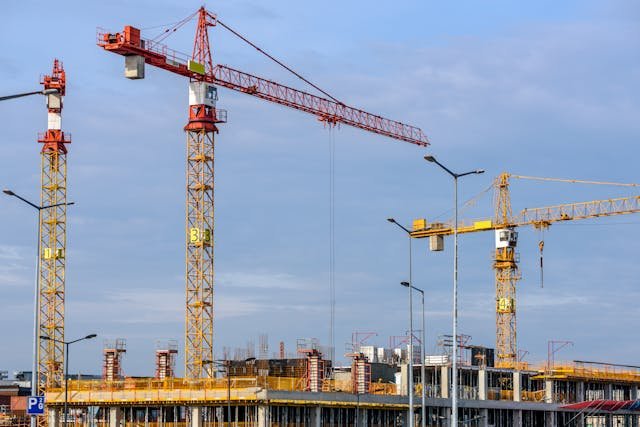
With environmental crises getting worse, the field of architecture is becoming more and more important in promoting sustainability. Buildings are responsible for a significant amount of the world's energy use and emissions, so architects have a huge impact on changing the course of history to become more environmentally friendly. This paper explores a range of tactics intended to support sustainability in the architectural field, from basic design ideas to careful material choices and construction techniques. Architects can both reduce environmental damage and bring about a paradigm change that will lead to a more regenerative and harmonious relationship between built environments and the natural world by utilizing innovative approaches and mindful practices.
Embracing Passive Design Strategies
In the pursuit of sustainable architecture, passive design strategies are fundamental building blocks that emphasize the harmonious integration of natural elements to maximize comfort and energy efficiency. Through skillful building orientation to maximize solar gain in the winter and minimize heat infiltration in the summer, architects can significantly reduce the need for mechanical heating and cooling systems. Additionally, the thoughtful placement of elements like thermal mass, shading devices, and natural ventilation increases indoor comfort levels while lowering energy consumption and carbon emissions. Adopting these passive design principles promotes a deeper symbiosis between architectural interventions and the surrounding ecosystems, in addition to encouraging environmental stewardship.
Integrating Renewable Energy Sources
The incorporation of renewable energy technologies is a fundamental element in the endeavor towards architectural sustainability, providing a feasible route to the decarbonization of the constructed environment. Architects can meet a building's energy needs while reducing reliance on fossil fuels by utilizing a variety of renewable energy sources, such as geothermal systems, wind turbines, and solar photovoltaics. Using deliberate integration and placement, these renewable energy systems can harmoniously merge with architectural shapes, combining practicality and visual appeal. Furthermore, developments in renewable energy technology have made these solutions more affordable and widely available, which has accelerated their adoption in the architectural field.
Prioritizing Sustainable Materials
A key component of sustainable architectural practice is material selection, which has a significant impact on a building's environmental footprint throughout its lifetime. Architects can take a comprehensive approach to material sourcing, giving preference to products that are recycled, locally sourced, or have low embodied energy. For example, using steel rebar as a reinforcement material not only ensures the structural integrity of a building but also contributes to sustainability when sourced from recycled materials. By carefully examining the complete supply chain, including extraction, manufacturing, and disposal, architects can make well-informed decisions that minimize environmental harm and advance social justice. Prioritizing materials that are durable and recyclable encourages the circular economy mindset, reducing waste and maximizing resource reuse, ultimately lowering the ecological impact of the construction industry.
Designing for Adaptability and Resilience
In a time of rapidly urbanizing cities and unpredictable climates, architects have to create structures that are both visually striking and resistant to changing environmental stresses. This calls for a paradigm change toward flexible and adaptive architectural typologies such as the practical Rhino basics solutions that can take into account lots of different variables that can help you become more flexible. The use of modular construction techniques, adaptable spatial plans, and sturdy structural systems allows architects to future-proof buildings against a variety of issues, such as extreme weather and population changes. The resilient building design also creates a feeling of longevity and endurance, giving people faith in a structure's capacity to endure the passage of time and adjust to unanticipated events.
Implementing Water-Efficient Design
Water scarcity is a serious problem in many parts of the world, which emphasizes the need for water-efficient architectural design techniques. To reduce water usage, architects can implement a variety of techniques, such as rainwater collection systems, greywater recycling, low-flow fixtures, and drought-tolerant landscaping. Architects can reduce pressure on municipal water supplies and create landscapes that are resilient to changing precipitation patterns by carefully managing water resources within the built environment. In addition, encouraging water conservation in communities cultivates a shared environmental stewardship mindset in which each drop is valued and used carefully.
Fostering Community Engagement and Education
In architecture, sustainability is not limited to the built environment; it is a comprehensive philosophy that includes community involvement and education. Architects are essential in promoting communication and cooperation between various stakeholders, such as local communities, policymakers, clients, and occupants. Architects can instill a sense of pride and ownership in their users by incorporating stakeholders in the design process and communicating the sustainable features and benefits of a building. In addition, using architectural spaces as venues for raising environmental awareness and educating the public promotes a sustainable culture that extends beyond specific structures and into the fabric of society as a whole. Using participatory design methods and grassroots advocacy, architects can spur a movement in society toward a built environment that is more equitable and sustainable.
A comprehensive and multifaceted approach is required to achieve sustainability in architecture, as social, economic, and environmental factors come together to influence the built environment of the future. The architectural profession can steer towards a future that is more resilient and regenerative, where buildings actively support the growth of communities and ecosystems while also mitigating environmental harm, using cooperative efforts and visionary leadership.